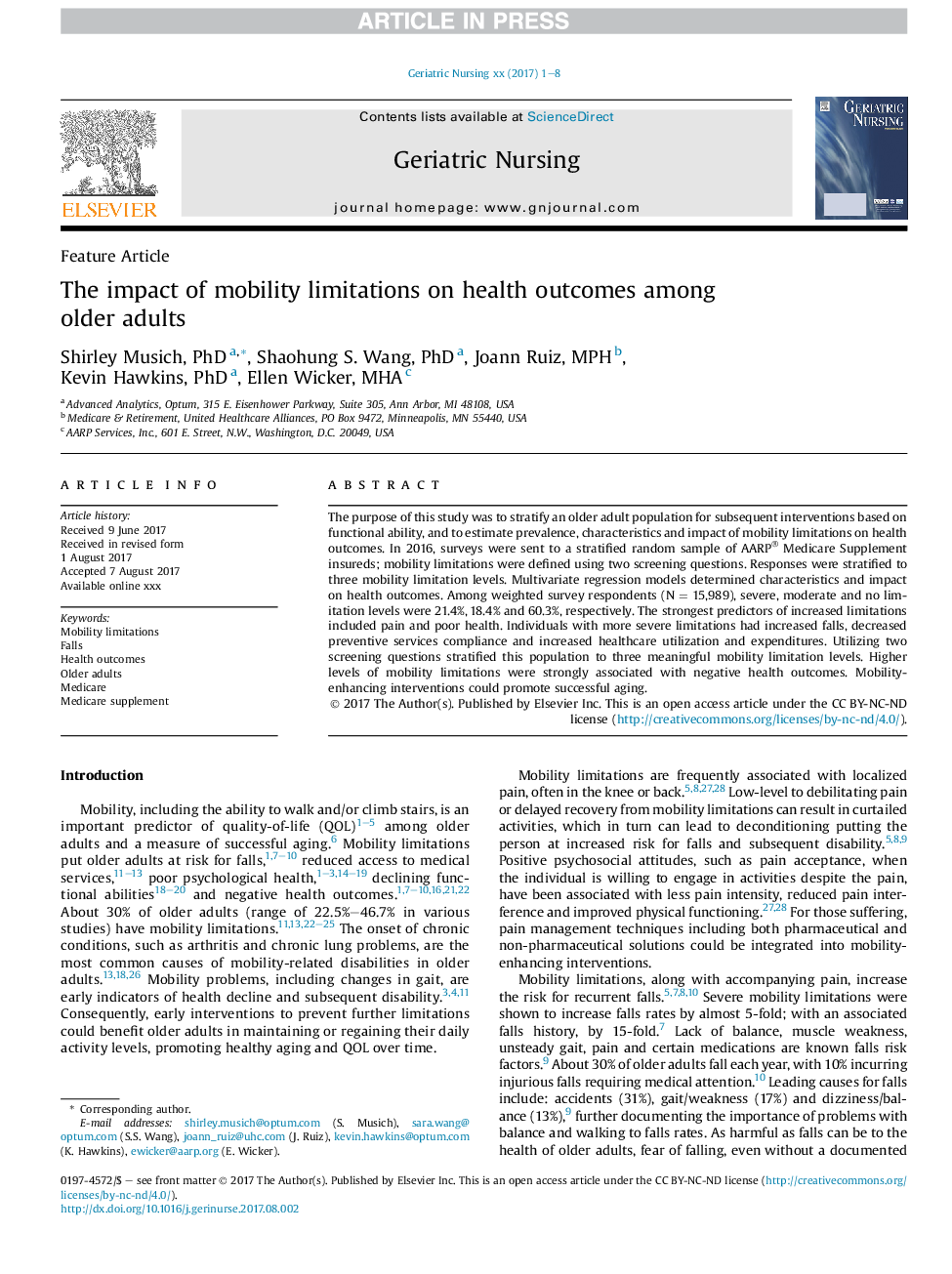| Article ID | Journal | Published Year | Pages | File Type |
|---|---|---|---|---|
| 8569926 | Geriatric Nursing | 2018 | 8 Pages |
Abstract
The purpose of this study was to stratify an older adult population for subsequent interventions based on functional ability, and to estimate prevalence, characteristics and impact of mobility limitations on health outcomes. In 2016, surveys were sent to a stratified random sample of AARP® Medicare Supplement insureds; mobility limitations were defined using two screening questions. Responses were stratified to three mobility limitation levels. Multivariate regression models determined characteristics and impact on health outcomes. Among weighted survey respondents (NÂ =Â 15,989), severe, moderate and no limitation levels were 21.4%, 18.4% and 60.3%, respectively. The strongest predictors of increased limitations included pain and poor health. Individuals with more severe limitations had increased falls, decreased preventive services compliance and increased healthcare utilization and expenditures. Utilizing two screening questions stratified this population to three meaningful mobility limitation levels. Higher levels of mobility limitations were strongly associated with negative health outcomes. Mobility-enhancing interventions could promote successful aging.
Related Topics
Health Sciences
Medicine and Dentistry
Geriatrics and Gerontology
Authors
Shirley PhD, Shaohung S. PhD, Joann MPH, Kevin PhD, Ellen MHA,
